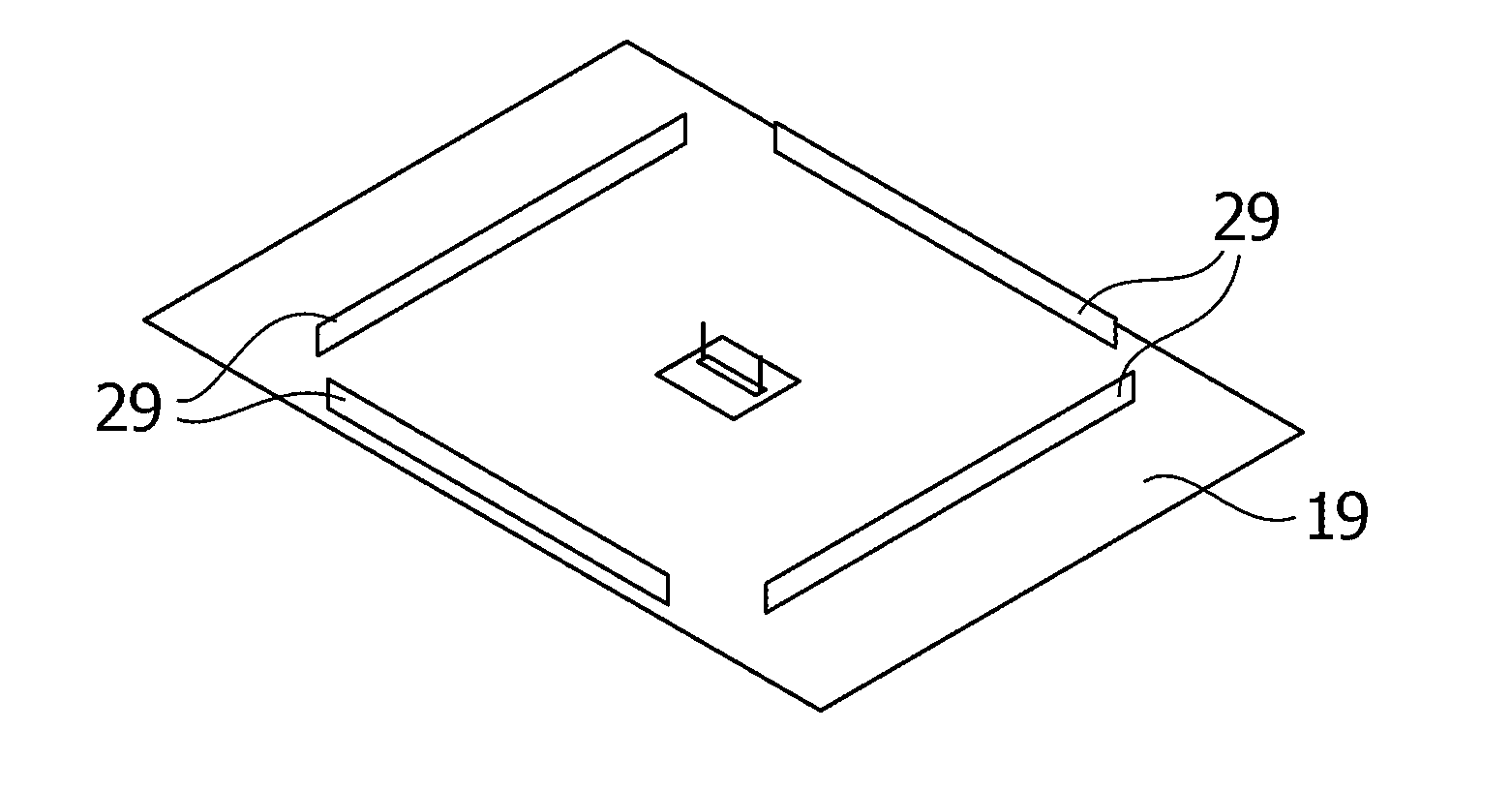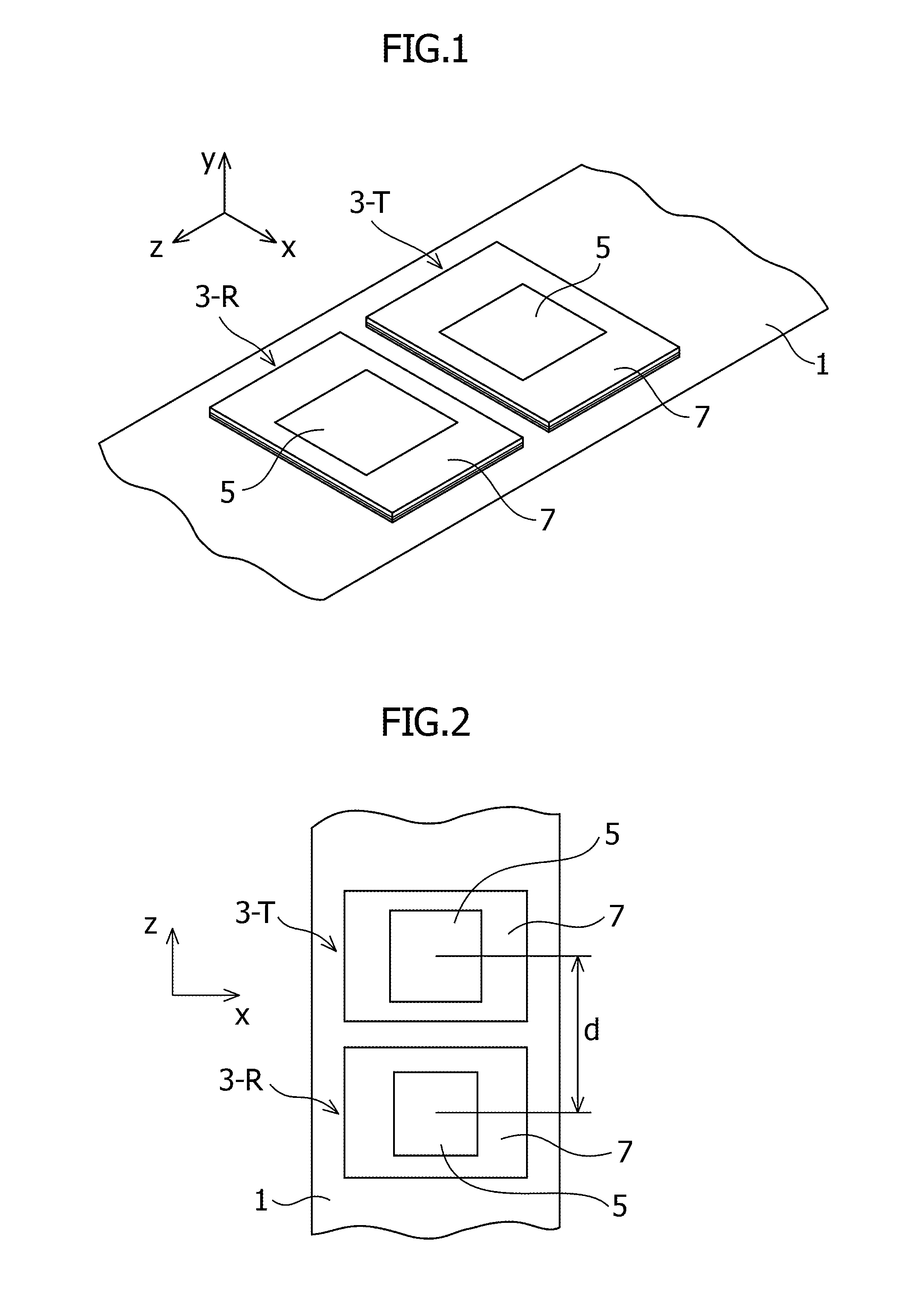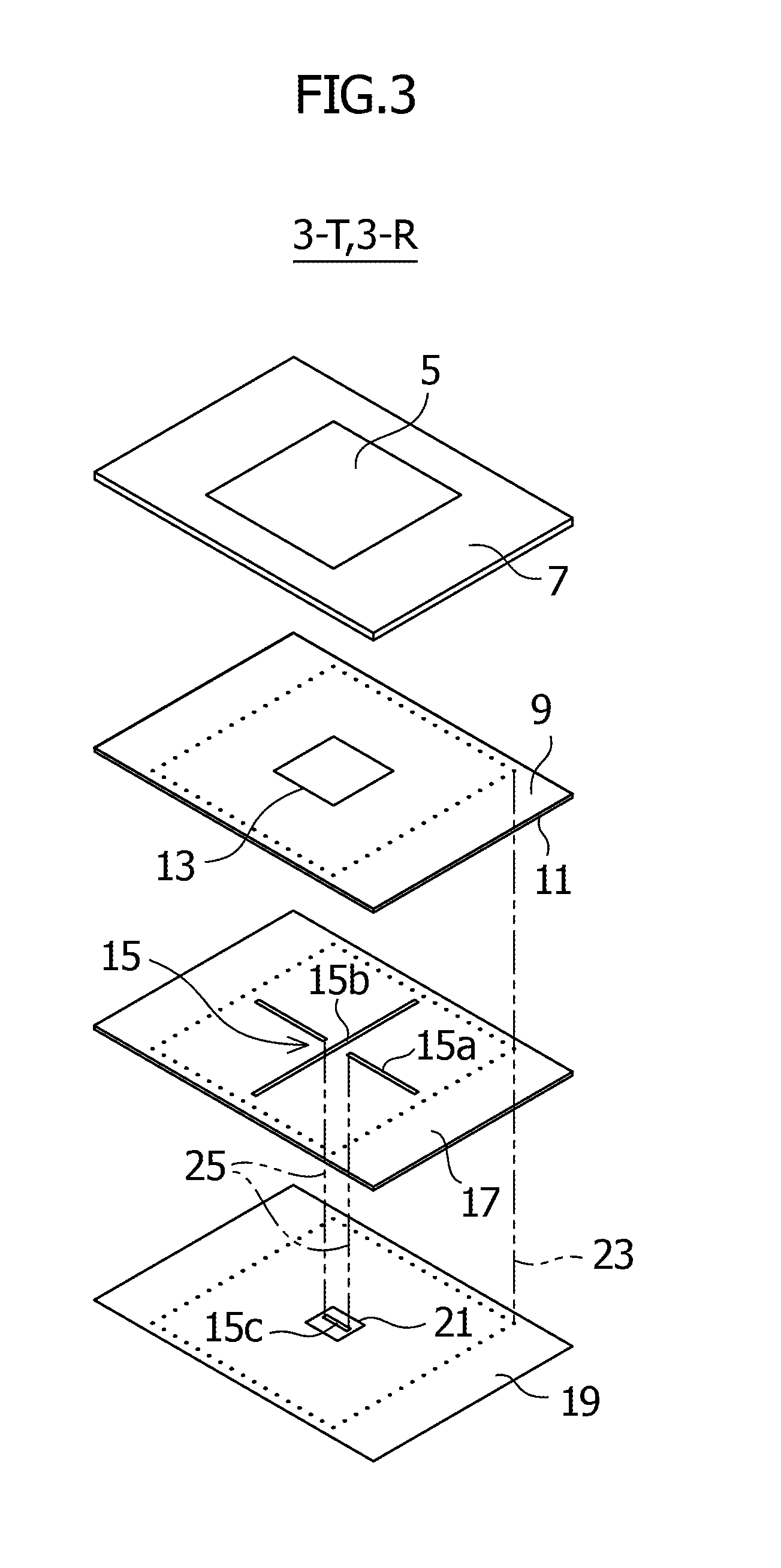Transmitting-receiving-separated dual-polarization antenna
a dual-polarization, transmitting and receiving technology, applied in the direction of antennas, antenna details, polarised antenna unit combinations, etc., can solve the problem of responding to the high required value, and achieve the effect of reducing the coupling between transmission and reception
- Summary
- Abstract
- Description
- Claims
- Application Information
AI Technical Summary
Benefits of technology
Problems solved by technology
Method used
Image
Examples
Embodiment Construction
[0043]In the following description, f0 and λ0 are a center frequency between a lower limit frequency of the receiving band and an upper limit frequency of the transmitting band and a wavelength thereof, respectively, fR and λR are a center frequency of the receiving band and a wavelength thereof, respectively, fT and λT are a center frequency of the transmitting band and a wavelength thereof, respectively, and fR=0.953 f0 (wavelength λR=1.049 λ0), fT=1.047 f0 (wavelength λT=0.955 λ0).
[0044]FIGS. 1 and 2 are a perspective view and a plan view which illustrate an embodiment of a transmitting-receiving-separated dual-polarization patch antenna according to the present invention. In these drawings, the direction of z-axis is perpendicular to the ground and the xy plane is a plane parallel to the ground. A transmitting-receiving-separated antenna according to the present embodiment includes a patch antenna 3-T for a transmitting band and a patch antenna 3-R for a receiving band, which ar...
PUM
 Login to View More
Login to View More Abstract
Description
Claims
Application Information
 Login to View More
Login to View More - R&D
- Intellectual Property
- Life Sciences
- Materials
- Tech Scout
- Unparalleled Data Quality
- Higher Quality Content
- 60% Fewer Hallucinations
Browse by: Latest US Patents, China's latest patents, Technical Efficacy Thesaurus, Application Domain, Technology Topic, Popular Technical Reports.
© 2025 PatSnap. All rights reserved.Legal|Privacy policy|Modern Slavery Act Transparency Statement|Sitemap|About US| Contact US: help@patsnap.com



